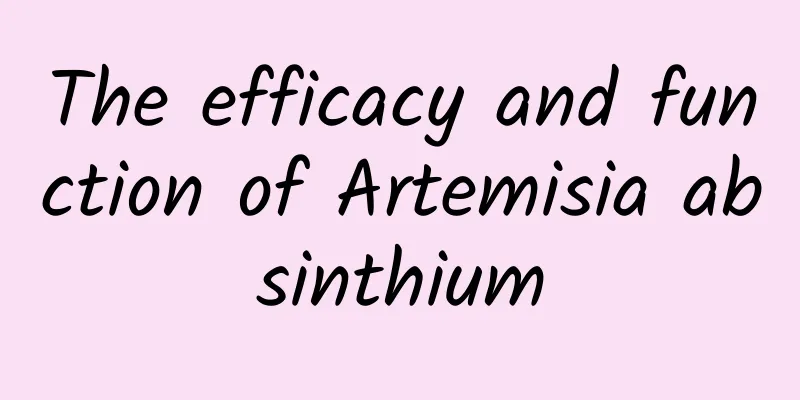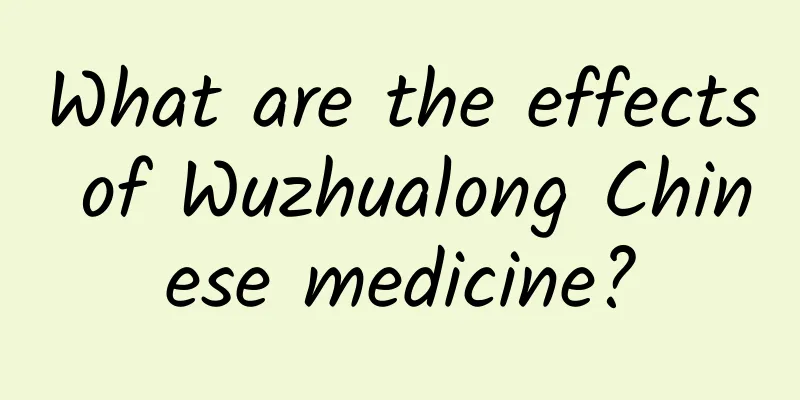The efficacy and function of Artemisia absinthium

|
Artemisia absinthium is a very common Chinese medicinal material in daily life. It has high medicinal and nutritional value to the human body, and it is not too difficult to purchase. Let’s analyze several aspects of Artemisia absinthium below. [Other names] Fish gall grass, wormwood, straight false gentian (Selected Yunnan Chinese Herbal Medicines), golden gentian (Sichuan Chinese Herbal Medicine Newsletter). [Source] It is the whole herb of Artemisia absinthium of the Asteraceae family. Harvest in autumn. [Original form] Artemisia absinthium : annual herb, about 60 cm tall, densely covered with soft hairs. The taproot is long columnar, yellowish brown, with fine fibrous roots on it. The stem is erect, cylindrical, densely pubescent, and multi-branched at the top. The simple leaves are alternate, oblong, 4-6 cm long, 2.5-3 cm wide, deeply pinnate, with lobes 3-4 mm wide, and densely covered with soft hairs on both sides. The capitula is about 6 mm in diameter and arranged in a panicle. The flowers are yellow. The outer flowers are female and filamentous, while the inner flowers are bisexual and tubular. The achenes are very small and have a row of pappus. Flowering period is summer. [Habitat distribution] Growing in wasteland and roadsides. Distributed in Yunnan and Sichuan. [Chemical composition] The whole plant contains alkaloids, saponins, phenolic substances, acidic substances and trace amounts of volatile oils. 【Pharmacological action】 ①Expectorant effect [Toxicity] Oral administration of the decoction, water extract and alcohol extract to mice showed very low toxicity. Rabbits were gavaged with 3 g/kg or 5 g/kg of water or alcohol extract daily for 30 days, and there was no significant change in their activity, appetite, excretion, or body weight. No significant changes were found during autopsy after sacrifice. 【Nature and flavor】 Bitter and cool. 【Functions and indications】 Anti-inflammatory, heat-clearing and detoxifying. Treat otitis media, wind-fire eye, wind-fire toothache, stomatitis, and pharyngitis. [Usage and Dosage] For internal use: decoct in water, 2 to 3 qian; or mash into juice. For external use: mash the juice and drop it into ears or eyes, or grind it into powder and sprinkle it on eyes. [Additional prescription] ① Treat otitis media: Juice of fresh Artemisia absinthium branches and leaves, add herring bile and drip into the ear. (The properties and flavors are from "Selected Yunnan Chinese Herbal Medicines") [Clinical Application] Treatment of chronic bronchitis: Remove the old stems and roots of Gentiana scabra, grind into powder, make into pills with water, and coat with talcum powder. Take 1 gram each time, 3 times a day, after meals. 565 cases were treated, 109 cases (19.3%) were nearly controlled, 187 cases (33.1%) were significantly effective, 207 cases (36.6%) were improved, and 62 cases (10.9%) were ineffective. Side effects: The incidence was 24.4%. Symptoms include abdominal distension, nausea, vomiting, diarrhea, dry mouth, dizziness, etc. It usually occurs within 1 to 2 days after taking the medicine. It is mild and may disappear on its own and does not interfere with continued medication. This medicine tastes very bitter and should be taken after meals. After taking the medicine, patients generally reported an increase in appetite, improved sleep and spirits, and obvious anti-inflammatory, expectorant, antiasthmatic and antitussive effects. Experiments have shown that the decoction of golden gentian has antibacterial effects on seven types of bacteria, including group A streptococci, pneumonia cocci, hemolytic streptococci, pneumonia bacillus, Staphylococcus aureus, Staphylococcus aureus, and catarrhalis. 【Excerpt】 《*Dictionary》 [Source] From "Commonly Used Herbs in Kunming Folk Culture" Dwarf Artemisia absinthium is a medicinal material that has existed for a long time. It is recorded in many Chinese medicine books, which shows that dwarf Artemisia absinthium does have good medicinal value. |
<<: The efficacy and function of quinoa
>>: The efficacy and function of pink green vine
Recommend
The efficacy and function of perilla leaves
Suye is a very common plant with a very special s...
From the fields to the people's tables, it is the "guardian knight" of pre-prepared meals
Have you ever eaten pre-prepared meals? Do you li...
If you punch a hole through the Earth and jump in, you won't pass through the Earth, nor will you stop at the center of the Earth.
The earth is a celestial body that is almost sphe...
The efficacy and function of mountain conch
The traditional Chinese medicine mountain conch i...
Do you have a bad face shape? Maybe you have this bad habit in the past! The earlier you treat it, the less impact it will have.
When looking in the mirror Everyone's face sh...
Are patterned ceramic tableware toxic? Can they really not be used anymore?
"Patterned ceramic tableware is poisonous, d...
The efficacy and function of wax petal flower
As people's living standards improve, they pa...
Heavy rain warning! Heavy to torrential rain in Guizhou and other 11 provinces and regions
The Central Meteorological Observatory continued ...
Millions of IPs create science and technology talents to strengthen the country丨The development of engine technology in the new energy field helps the industry's green transformation
As the most widely used power machinery with the ...
Wearing a mask = sun protection? Don’t be naive! Dermatologists give 6 suggestions!
How high is the temperature in Guangzhou recently...
The efficacy and function of Featherleaf Mountain Leech
Chinese medicinal materials have good effects on ...
Many people dream of traveling through time. After watching the conflicting film "The Tomorrow War," you'll know how absurd it is.
The so-called time travel is to travel from one t...
Onions prevent cancer and reduce blood sugar. Are they edible "heart stents"? Purple and white skins are actually very different
Expert of this article: Zhang Zheng, PhD in Nutri...
The efficacy and function of Datura root
We know that there are many kinds of Chinese medi...
The alarm is ringing, but I advise you to sleep a little longer!
Is this how you get up every morning? Seven or ei...









